-
 bitcoin
bitcoin $114684.631706 USD
-0.87% -
 ethereum
ethereum $4228.677447 USD
1.58% -
 bnb
bnb $1294.880693 USD
-1.16% -
 tether
tether $1.000819 USD
-0.02% -
 xrp
xrp $2.605138 USD
2.79% -
 solana
solana $209.908690 USD
5.89% -
 usd-coin
usd-coin $0.999903 USD
-0.03% -
 dogecoin
dogecoin $0.213423 USD
2.93% -
 tron
tron $0.322721 USD
-0.10% -
 cardano
cardano $0.727247 USD
3.66% -
 hyperliquid
hyperliquid $42.339456 USD
6.05% -
 chainlink
chainlink $19.910811 USD
5.16% -
 ethena-usde
ethena-usde $1.000557 USD
0.00% -
 stellar
stellar $0.349734 USD
2.69% -
 bitcoin-cash
bitcoin-cash $543.848687 USD
-0.21%
What is a token "vesting schedule"?
Token vesting schedules ensure gradual token release to stakeholders, promoting long-term commitment, price stability, and investor trust in crypto projects.
Oct 14, 2025 at 09:18 am
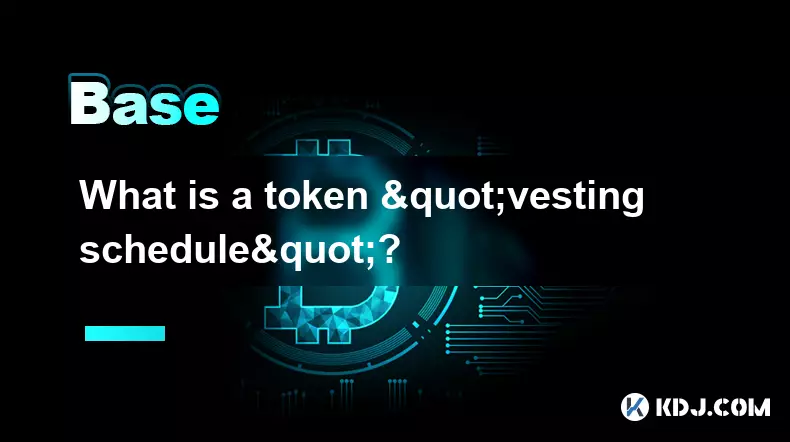
Understanding Token Vesting Schedules in Cryptocurrency Projects
A token vesting schedule is a predetermined timeline that governs the release of tokens to various stakeholders in a blockchain project. These stakeholders typically include team members, advisors, investors, and early contributors. The primary goal of implementing a vesting schedule is to align long-term incentives with the sustained growth and stability of the project.
Without such mechanisms, there's a risk that individuals holding large amounts of tokens could dump them immediately after launch, causing price instability and loss of confidence among the community. A well-structured vesting plan ensures gradual distribution, discouraging short-term speculation and promoting commitment to the project’s vision.
Purpose and Benefits of Vesting Schedules
- 1. Prevents market flooding by restricting immediate token availability, which helps maintain price stability post-launch.
- 2. Encourages team members and key contributors to remain involved over extended periods, knowing their rewards are tied to long-term performance.
- 3. Builds trust with retail investors who see that insiders are not able to cash out instantly, signaling confidence in the project’s future.
- 4. Supports fairer token distribution by ensuring allocations are unlocked progressively rather than all at once.
- 5. Mitigates the risk of exit scams, as developers and founders have a financial incentive to continue developing the platform to access their full token allocation.
Different Types of Vesting Structures
- 1. Linear vesting releases tokens at regular intervals—such as monthly or quarterly—over a fixed duration, for example, 20% every quarter over five quarters.
- 2. Cliff vesting involves a delay before any tokens are released; for instance, no tokens are distributed for the first six months, after which releases begin on a scheduled basis.
- 3. Hybrid models combine both cliff and linear elements, where a portion unlocks after a one-year cliff, followed by monthly distributions for the remainder of a two-year period.
- 4. Milestone-based vesting ties token releases to specific project achievements, such as mainnet launch, user adoption targets, or exchange listings.
- 5. Dynamic vesting adjusts release schedules based on predefined performance metrics tracked through smart contracts, offering flexibility while maintaining accountability.
Impact on Market Dynamics and Investor Confidence
- 1. Transparent vesting terms are often scrutinized by institutional investors before participating in private sales or strategic partnerships.
- 2. Projects with aggressive unlock schedules—like large percentages releasing shortly after launch—tend to face downward pressure on token prices due to anticipated selling.
- 3. Publicly disclosed vesting details enable traders and analysts to model future supply inflation and adjust their investment strategies accordingly.
- 4. Communities frequently demand audits of vesting contracts to verify that promised lock-up periods are enforced via immutable code.
- 5. Mismanagement or unexpected changes to vesting terms can trigger panic, leading to rapid sell-offs and reputational damage within the crypto ecosystem.
Frequently Asked Questions
What happens if a team member leaves before their tokens are fully vested?In most cases, unvested tokens are forfeited and returned to the project treasury or redistributed according to governance rules. This reinforces accountability and ensures only active contributors benefit from long-term rewards.
Can vesting schedules be modified after deployment?Ideally, vesting contracts are immutable once deployed on-chain. However, some projects use upgradable smart contracts, which pose risks if centralized entities alter terms without community consent. Transparency and decentralization are critical safeguards here.
How do investors verify vesting details?Investors analyze blockchain explorers to trace wallet activities, review official documentation like whitepapers, and rely on third-party analytics platforms that track token unlock timelines across major cryptocurrencies.
Are there tools to monitor upcoming token unlocks?Yes, several data platforms provide real-time dashboards showing imminent token releases based on vesting schedules. These tools help traders anticipate potential market movements caused by increased supply entering circulation.
Disclaimer:info@kdj.com
The information provided is not trading advice. kdj.com does not assume any responsibility for any investments made based on the information provided in this article. Cryptocurrencies are highly volatile and it is highly recommended that you invest with caution after thorough research!
If you believe that the content used on this website infringes your copyright, please contact us immediately (info@kdj.com) and we will delete it promptly.
- XRP Price Prediction: Weekend Rollercoaster or Rally?
- 2025-10-12 08:45:16
- Bittensor (TAO): Super Bullish Signals Point to Potential 2x Rally
- 2025-10-11 10:25:12
- Silver Price Correction: Navigating the Dip & Identifying Key SEO Keywords
- 2025-10-11 10:25:12
- Decoding Crypto Trends: Bittensor's Bull Run, Cardano's Dip, and LivLive's Presale Buzz in 'Uptober 2025'
- 2025-10-12 08:45:16
- MoonBull: The Crypto Meme Coin Promising 1000x Gains?
- 2025-10-11 10:30:01
- Crypto Payroll Revolution: Stablecoins, Altcoins, and the Future of Salary Payments
- 2025-10-11 10:30:01
Related knowledge

What does it mean for code to be "open source" in crypto?
Oct 12,2025 at 01:54pm
Understanding Open Source in the Cryptocurrency Ecosystem1. In the context of cryptocurrency, open source refers to software whose code is publicly ac...

What is the purpose of a "testnet"?
Oct 12,2025 at 09:01am
Understanding the Role of Testnets in Blockchain Development1. A testnet serves as a parallel version of a blockchain network, designed specifically f...

How to avoid phishing scams in crypto?
Oct 13,2025 at 06:18pm
Understanding Common Crypto Phishing Tactics1. Cybercriminals frequently use fake websites that mirror legitimate crypto exchanges or wallet platforms...

What is the difference between single-collateral and multi-collateral Dai?
Oct 12,2025 at 05:18pm
Understanding Single-Collateral Dai1. Single-Collateral Dai (SCD) was the original version of the Dai stablecoin launched by MakerDAO in 2017. It allo...
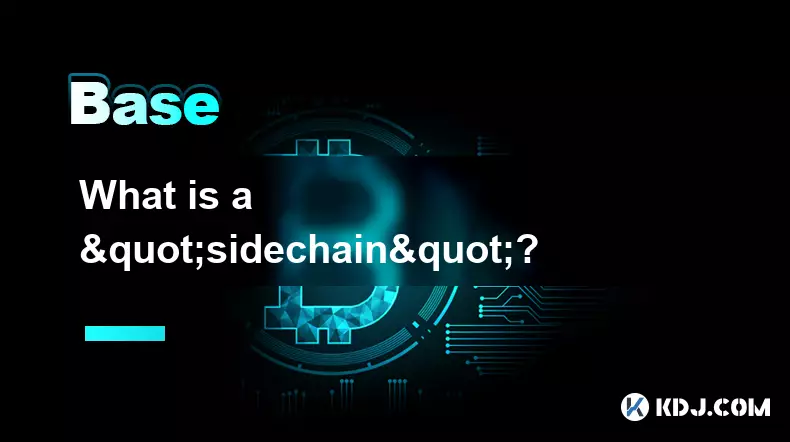
What is a "sidechain"?
Oct 13,2025 at 02:36pm
Understanding the Concept of Sidechains1. A sidechain is a blockchain that operates independently but is connected to another blockchain, known as the...

What is "EIP-1559" and how did it change Ethereum?
Oct 12,2025 at 03:00am
Understanding EIP-1559 and Its Core Mechanism1. EIP-1559 is a protocol upgrade introduced to the Ethereum blockchain as part of the London hard fork i...

What does it mean for code to be "open source" in crypto?
Oct 12,2025 at 01:54pm
Understanding Open Source in the Cryptocurrency Ecosystem1. In the context of cryptocurrency, open source refers to software whose code is publicly ac...

What is the purpose of a "testnet"?
Oct 12,2025 at 09:01am
Understanding the Role of Testnets in Blockchain Development1. A testnet serves as a parallel version of a blockchain network, designed specifically f...

How to avoid phishing scams in crypto?
Oct 13,2025 at 06:18pm
Understanding Common Crypto Phishing Tactics1. Cybercriminals frequently use fake websites that mirror legitimate crypto exchanges or wallet platforms...

What is the difference between single-collateral and multi-collateral Dai?
Oct 12,2025 at 05:18pm
Understanding Single-Collateral Dai1. Single-Collateral Dai (SCD) was the original version of the Dai stablecoin launched by MakerDAO in 2017. It allo...

What is a "sidechain"?
Oct 13,2025 at 02:36pm
Understanding the Concept of Sidechains1. A sidechain is a blockchain that operates independently but is connected to another blockchain, known as the...

What is "EIP-1559" and how did it change Ethereum?
Oct 12,2025 at 03:00am
Understanding EIP-1559 and Its Core Mechanism1. EIP-1559 is a protocol upgrade introduced to the Ethereum blockchain as part of the London hard fork i...
See all articles





















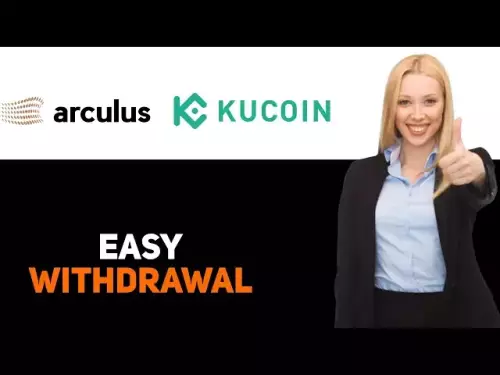

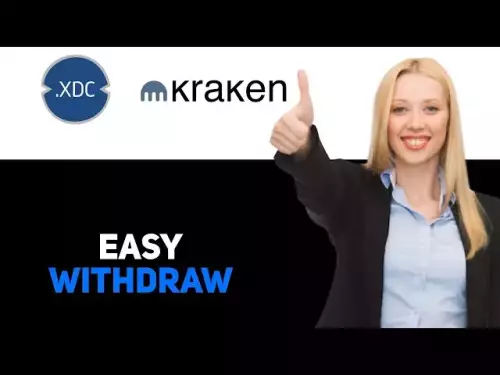
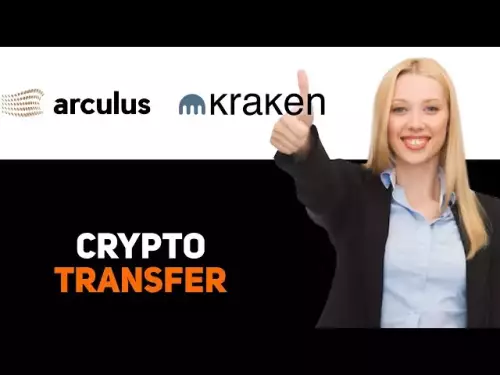
![[4K 60fps] Prisma by novichokk (1 Coin) [4K 60fps] Prisma by novichokk (1 Coin)](/uploads/2025/10/14/cryptocurrencies-news/videos/k-fps-prisma-novichokk-coin/68ee49804ba00_image_500_375.webp)
















































